- Home
- L. Ron Hubbard
L. Ron Hubbard Presents Writers of the Future Volume 35 Page 14
L. Ron Hubbard Presents Writers of the Future Volume 35 Read online
Page 14
It was stated in an early Sanskrit treatise that the world is round. Thales, Homer, Aristotle, Pythagoras, Ptolemy and others conceived various evidences which demonstrated that the earth was a sphere. In 250 BC, Erathosthanes computed the earth’s circumference, missing it only by one hundred miles (and he had no mechanical aids or “higher” mathematics).
Of course, these gentlemen made errors in their hypotheses. Ptolemy, 140 AD, conceived of seven crystalline spheres to account for planetary motion. To counter for this, long before (in the sixth century BC) Pythagoras taught that the earth went around the sun but erred in supposing the sun to be the center of the universe. Aristarchus, in the third century BC, and Capella in the fifth century AD, also taught that the earth revolved itself around the sun. Copernicus, in the sixteenth century, gave the world the system which is now used.
Now the point we wish to make is this, down through the ages, men have conceived various hypotheses with regard to astronomy. Concurrently, instruments were invented and other discoveries made and into the hands of investigators was placed a complete idea, plus the means of examining it. There has been considerable lag, naturally, between widespread belief and philosophic location of new truths. We are fond of thinking in terms of tomorrow. But, the future is written with the pen of the present in the ink of the past.
We are fond of believing that that which we now possess is infallible and not subject to any great change. And, when we begin to localize certain fields for investigation, science feeds wholly upon the statements of predecessors. Should a man put forth a new theory (there hasn’t been one since the nineteenth century), then he is no longer a scientist but a philosopher.
Let us remember our Voltaire and his admonition to define our terms. What is science? What is philosophy? Further, by knowing, what can we hope to gain by it? Will we benefit enough to talk about it? The answer to the last two is definitely yes.
To quote Spencer, “Knowledge of the lowest kind is un-unified knowledge; science is partially-unified knowledge; philosophy is completely-unified knowledge.” (First Principles, p. 103).
Philosophy is not the muttering of epigrams nor is the true philosopher merely one who can quote at random from various great works.
Consider an explorer, casting away, all too often, his greatest securities, even his life, to stride forward into the outer dark, throwing up his star shells to view what lies in the unknown. He lacks a vocabulary suitable to record his findings because the words have yet to be invented. He lacks instruments to measure what he thinks he sees because no instruments for such are yet in existence. He stumbles and trips, pushing ever outward on his lonely track, farther and farther from the milestoned roads where statements are safe and conversants many. He is so far out, that those in their safe, warm homes of “proved thought” cannot recognize the distance he has traversed when he first covers it.
His is the task of stabbing deeper into the Unknown and the dangers he runs are those of ridicule. He knows, in his heart of hearts, what his fate will most likely be. He may come back with some great idea only to find that men laugh. He may point a road which will be a thoroughfare within a century but men, having but little vision, see only a tangle of undergrowth and blackness beyond and push but timidly where the first to go pushed forward with such courage.
In all the ages of history, thinking men have been crucified either by institutions or the masses. But those very ideas, which at first seemed so mad and impossible, are those which science now uses to polish up its reputation.
Inevitably, the philosopher, the true searcher, is decried. But then, it is perfectly natural. His breadth of view is so great and penetrating that he can unify all the knowledge groups, taking his findings to discover a lower common denominator.
It is quite natural that he should do this, just as it is that his work should usually be spurned by his own generation.
Un-unified knowledge is that possessed by every animal or drudge. “A cake of soap cleans a shirt.” “A cake of soap cleans a floor.” “A cake of soap cleans the face.”
Partially-unified knowledge on this subject would be: “A cake of soap cleans,” and “let us see how many things a cake of soap will clean.”
Completely-unified knowledge on the subject would be: “Any agent which holds foreign matter in solution will clean.”
The argument here is quite plain. Partially-unified knowledge has become a group of men all anxious to assemble data on the science of soap. The completely-unified knowledge opens up a new vista, the possibility of discovering some medium which will clean anything.
And if you think this is facetious, know that there is no medium which will clean everything and anything equally well. It would be essentially destructive to a million volumes of hard won data concerning soap. The philosopher has come up against a resistant force. He reduced the matter to simplicity and indicated that it was necessary to search for a new cleaner, not a new method. Put into practice immediately and meeting with success, the idea would destroy, for instance, the business of hundreds of soap factories and would, of course, throw umpteen thousand soap chemists out of excellent jobs.
There is nothing being used today except those ideas given to the world by philosophers. For instance, Spinoza is responsible for most of modern psychology. Plato wrote about psychoanalysis in his Republic (in addition to most of our ideas on the political side of the ledger as well). Aniximander (610–540 BC) outlined our theory of evolution and Empedocles (c. 490–c. 430 BC) developed it as far as we have gone, originating natural selection. Democritus said, “In reality, there are only atoms and the void,” and went on to outline the theories of planetary evolution much as they are used today. The Ionian Greeks developed the major portion of our physics. Kant handed out the finishing touches, with Schopenhauer (a strange combination, this) on our psychology, Spencer on evolution; Newton put natural laws into equations and invented mathematics to work them. Spinoza went so far into the realm of the outer dark that no one has caught up to him yet, though the trails are being followed slowly and inexorably to the destinations he indicated. But science in each case contemporarily taught and used outworn systems and considered that it had reached an outer frontier when, in reality, science was always hundreds of years behind the philosophic frontier!
In short, science has the unhealthy tendency to isolate and expand that isolation, where philosophy tends to reach higher or more general laws. Give a scientist a theory (witness cytology) and he immediately sets out and collects gravitically all the facts pertinent to that one thing. To the scientist is owed the particulars. The scientist inherits the theories and instruments already conceived and smooths out the rough spots. The philosopher is challenged because he does not do this but, as we have remarked, he has no instruments, no tables, no aid of any kind which has reached as far as he has gone forward.
In this manner, science tends to group and then complicate any subject. It is to science that the masses owe their benefits. It is to the philosopher that science owes all its fuel. The citizen, seeing not very far, praises where praise is really due but not wholly due to the point where a scientist can laugh at philosophic ideas, the very things which gave him the material with which to work.
That science does attempt to propagandize its importance to the extent of origination is attested by the commonly heard statement that “Now everything is all invented and if one would desire fame he must specialize.” That word “specialize” is a red flag to any philosopher because it automatically indicates the localizing of knowledge into hideous complexities, which, he knows very well, will be destroyed just as all other complicated structures were ripped down when a new truth was isolated. Now it is indicative of the essential nature of science that it wars ceaselessly within itself in favor of this or that hypothesis as countering another hypothesis. It can be said with truth that the battles of philosophy are fought by science against science. Science comes along with
measuring sticks of the already known, takes sides and begins to fire, without once inventing any substitute or new hypothesis of its own and ridiculing any which may be offered. So stubborn is science that it hangs to its achieved tomes like a bulldog. Ptolemy’s weird theory of crystalline spheres was taught concurrently with the revised Copernican System in one of the oldest American universities for many years.
This is no diatribe against science, it is a defense of new theories, new ideas, new concepts and the men who made them. The laughter leveled at the heads of innovators is amusing only if it be remembered that the ideas now in use were once equally ridiculed by science. And one has only to glance back with the perspective of the years to see that science has embraced many things much more weird—such as a hemisphere on four elephants on a mud turtle on mud, mud, mud. Doubtless, in this instance, there were a hundred libraries filled with tracts to the effect that the mud turtle had green eyes as against the opinion of another that his eyes were purple. Basing this on horizon stars and examining them as reflection, scientists of that day were likely very learned within their sphere of findings.
But there is such a thing as a cumulation of knowledge. By this, most men envision being swamped by facts and books. Libraries crammed to the roof, laboratories humming, men shouting in lecture rooms, men writing vast discourses on electrons and positrons … But there is no need for alarm. Ten times as much data has been stacked away in the basement where it molds, forgotten, the product of but fifty years ago but now disproved through the scientific acceptance of higher generalizations. Each time a higher generalization is reached, all men shout, “This is the ULTIMATE! Man can go no further!” But they forget, that in quiet places men are looking all about them, not at one special object but at all objects and so it comes as a shock when a perfectly simple truth which was right under everybody’s nose all the time, was brought to light.
Just as God’s connection with man and the Creator of the Universe (Prime Mover Unmoved or whatever God might really be) is pushed back step by step infinitely, so is all knowledge simplified.
Two hundred years ago (although it had probably been outlined already) science would have blinked at the idea of splitting the atom. Science dealt in atoms and molecules in that day and nothing smaller. Today every schoolboy knows that an atom can be split and remade into several things. A hundred years from now, men will look back at this atom splitting and shake their heads over such stupidity as thinking that an electron was the smallest division.
But how do we get to the point where we can look back? The answer is somewhere in our midst. Just who will advance the theory and method for releasing atomic energy is not important. That the possibility of doing so has been often sighted and that various means are constantly being proposed is the course which will lead to such a thing. And do not for one hypnotized moment suppose that the method will be born in any flashing, sparking laboratory endowed with millions. On the contrary, it will first be proposed by a thinker. The laboratory may later claim all the credit but that is of no matter, it seems, as long as men can then begin to write all about the mathematics of disintegration with which they will fill ten thousand libraries.
If this cannot be believed, if it cannot be accepted that all truths are simple truths and need only to be pointed out, recall that the splitting of the atom was a simple truth. Then, if it be a matter of concern that the only discoveries left will be complex and that specialization is paramount, remember that the discovery of the disintegration of the atom will scrap all the fine tomes (which fill ten thousand libraries) on the subject of internal combustion engines and propelling forces in general as well as all extant hull, wheel and wing designs. The only thing of these fine flights which will remain is the essential truth from which they were born.
Knowledge is not a swamping sea of facts but a long line of simple truths, each one more simple than the last. If one would discover the next in line, let him not in any specialized field but rather in a cross between two fields or more. And as a man cannot be specialized in half a dozen fields it remains that his investigations would have to be wholly independent of any rubber-stamped outlook. The atom disintegrator may come as a cross between botany and physics. Who would dream of such a thing? But already the newest source of energy is the leaf of a tree. Would a physicist, interested only in physics, have discovered that? It is doubtful. He would have to be more concerned with the entire world around him than he would be with his immediate laboratory bench. Strangely enough, the men who have isolated the greatest truths have not been what is generally known as “an educated man.” Widely read, yes. Intelligent, certainly. But above all, anxious to push into anything and everything where the devil would fear to tread.
This thirst for adventure into the abstract is the motivating force of all youth. Later, weighed down with admonitions that one must specialize, youth succumbs to the lure of security and forgets about those things he wanted to plan, in the scramble to read all everybody ever said on the subject of Trimming Frogs’ Toenails.
To be very specific, today the scientist mocks wild ideas about interplanetary travel, saying, “Wel-l-l-l, yes-s, it might be done … maybe. But …” With all respect to him, he is perfectly right. He has a certain job of his own to do. He will probably be dead long before man first sets foot on the moon. But that the dream, any wildest dream, can be accomplished needs only the verification of the source of most of our mechanical marvels today. Submarine? Locomotive? Airplane? Stratosphere and overweather? Typewriter? Traffic signals? Look at what you may and where you may, you will uncover “science-fiction” or a man interested in it.
The philosophers of the great general ideas are, of course, in a class by themselves. But as far as the advanced applications of various methods and hybrid sciences, as far as the forecast of our civilization, and indeed our very architecture of tomorrow, one has only to search the files.
Men have been writing “science-fiction” since the Phoenicians, perhaps. At least the first story followed soon after writing itself. Once where the “pseudo-science” sent a man west on an iron horse to fight Indians (which didn’t happen really, until many, many years had flown), it now sends men into the outer galaxies.
Among the scientists of today are many outlaws, not quite philosophers, but still intrigued by the ideas which can be turned up.
Looking back into the past’s dim depths one can see a great many “foolish” ideas brought to fruition. Looking ahead into the future, one can see …?
The Idealist
written by
L. Ron Hubbard
illustrated by
BRIAN C. HAILES
* * *
ABOUT THE STORY
Originally published in 1940 in Astounding Science Fiction, “The Idealist” was met with reader acclaim declaring it “one of the most unforgettable bits of writing I’ve ever come across” and “so good, it hurt to read it.”
With such great reception, it could be surprising that it isn’t as well known as other L. Ron Hubbard sci-fi classics, such as To the Stars or Final Blackout. But that is simply because it and the subsequent five stories that encompass the series were written under the pen name Kurt von Rachen. And the true name of the author wasn’t revealed until a decade later.
Science fiction in 1940 was a short-story field. It was also a poorly paying genre at one cent per word. To make a living in that market, an author had to write a lot of stories. But then editors didn’t want the same names on the cover month after month, even if they wanted the same quality of story, so the best writers used pseudonyms. And that’s why you’ve not heard of “The Idealist” by L. Ron Hubbard.
As an aside, the Kurt von Rachen name has a comical origin several years prior to “The Idealist.” In response to an editor’s pronouncement that he was looking for new talent (really hoping to find new writers willing to work for a lower rate), Ron wrote “a sizzling story of the legion” from legionn
aire Kurt von Rachen. The editor was so proud to have discovered new talent that rivaled the best his magazines had been publishing, he bragged to Ron himself. And as Ron didn’t have the heart to reveal his gag, he let it ride.
In reading “The Idealist,” you’ll find something you may not expect, revelations written by a clear-eyed realist who saw things as they were, not according to the popular view. Revelations which may be as true today as when they were written.
ABOUT THE ILLUSTRATOR
Brian C. Hailes, creator of the popular YouTube channel, Draw It With Me, is also the award-winning writer/illustrator of the illustrated novel Blink, two graphic novels, entitled Dragon’s Gait and Devil’s Triangle, and the children’s picture book, Skeleton Play. Other titles he has illustrated include Heroic: Tales of the Extraordinary; Passion & Spirit: The Dance Quote Book; Continuum (Arcana Studios); as well as McKenna, McKenna; Ready to Fly; and Grace & Sylvie: A Recipe for Family (American Girl). In addition to his several publishing credits, Hailes has illustrated an extensive collection of fantasy, science fiction, and children’s book covers, as well as interior magazine illustrations.
Hailes has received numerous awards for his art from across the country, including 2002 Winner of the L. Ron Hubbard Illustrators of the Future. His artwork has also been featured in the 2017 and 2018 editions of Infected by Art.
Hailes studied illustration and graphic design at Utah State University, where he received his Bachelor of Fine Arts degree, as well as the Academy of Art University in San Francisco.
He has been a regular panelist and presenter at Salt Lake FanX, LTUE, and was the Artist Guest of Honor at Conduit 2013. He has also appeared as a special guest at San Diego Comic Con.

 Fifty-Fifty O'Brien
Fifty-Fifty O'Brien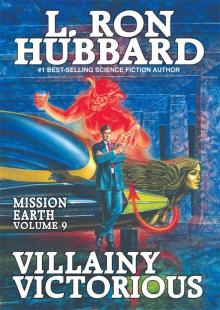 Villainy Victorious
Villainy Victorious Spy Killer
Spy Killer Ai! Pedrito!: When Intelligence Goes Wrong
Ai! Pedrito!: When Intelligence Goes Wrong The Dangerous Dimension
The Dangerous Dimension Mission Earth Volume 1: The Invaders Plan
Mission Earth Volume 1: The Invaders Plan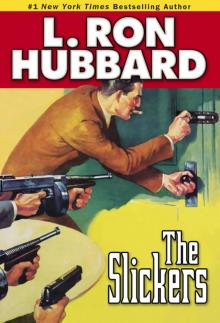 The Slickers
The Slickers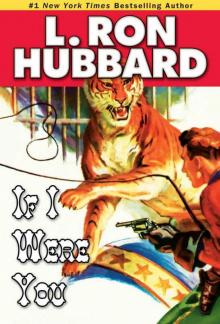 If I Were You
If I Were You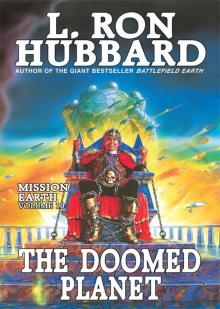 The Doomed Planet
The Doomed Planet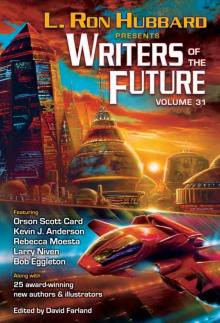 Writers of the Future Volume 31
Writers of the Future Volume 31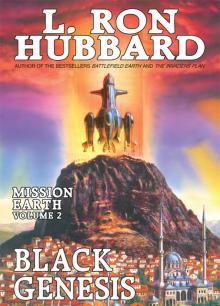 Mission Earth Volume 2: Black Genesis
Mission Earth Volume 2: Black Genesis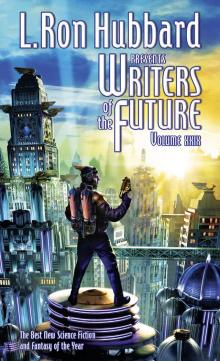 Writers of the Future: 29
Writers of the Future: 29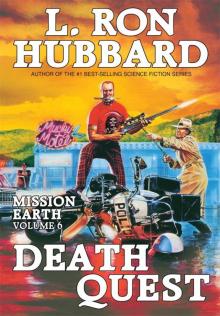 Death Quest
Death Quest The Enemy Within
The Enemy Within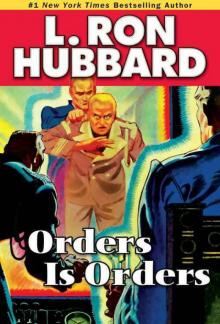 Orders Is Orders
Orders Is Orders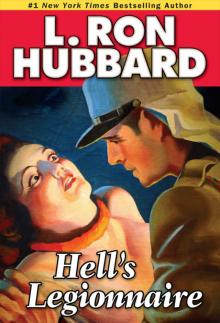 Hell's Legionnaire
Hell's Legionnaire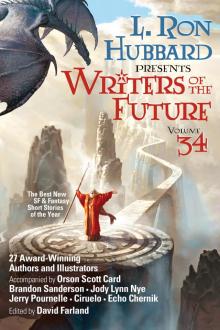 L. Ron Hubbard Presents Writers of the Future 34
L. Ron Hubbard Presents Writers of the Future 34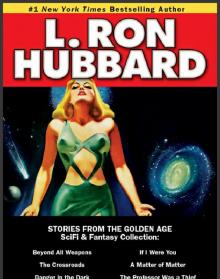 The Scifi & Fantasy Collection
The Scifi & Fantasy Collection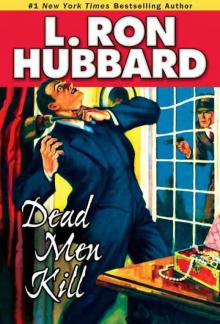 Dead Men Kill
Dead Men Kill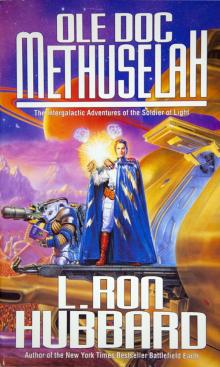 Ole Doc Methuselah: The Intergalactic Adventures of the Soldier of Light
Ole Doc Methuselah: The Intergalactic Adventures of the Soldier of Light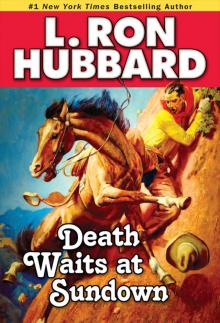 Shadows From Boot Hill
Shadows From Boot Hill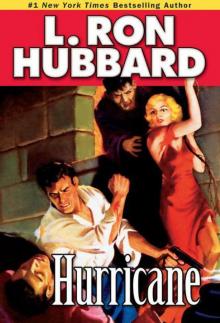 Hurricane
Hurricane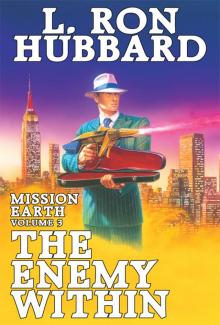 Mission Earth Volume 3: The Enemy Within
Mission Earth Volume 3: The Enemy Within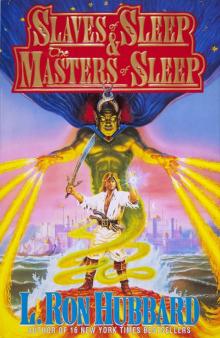 Slaves of Sleep & the Masters of Sleep
Slaves of Sleep & the Masters of Sleep One Was Stubborn
One Was Stubborn Final Blackout: A Futuristic War Novel
Final Blackout: A Futuristic War Novel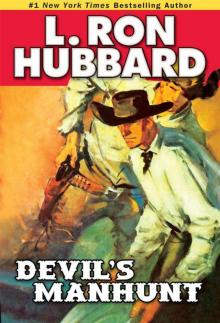 Devil's Manhunt
Devil's Manhunt A Matter of Matter
A Matter of Matter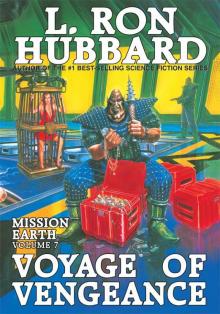 Voyage of Vengeance
Voyage of Vengeance If I Were You (Science Fiction & Fantasy Short Stories Collection)
If I Were You (Science Fiction & Fantasy Short Stories Collection)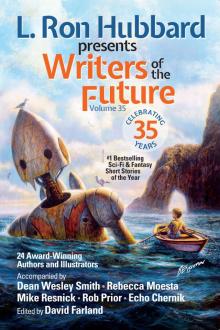 L. Ron Hubbard Presents Writers of the Future Volume 35
L. Ron Hubbard Presents Writers of the Future Volume 35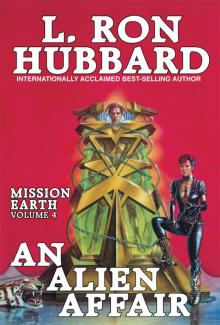 Mission Earth Volume 4: An Alien Affair
Mission Earth Volume 4: An Alien Affair Black Genesis
Black Genesis Tinhorn's Daughter
Tinhorn's Daughter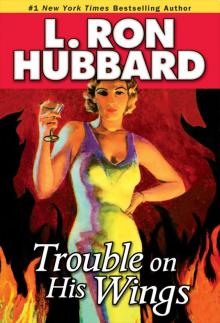 Trouble on His Wings
Trouble on His Wings Writers of the Future Volume 27: The Best New Science Fiction and Fantasy of the Year
Writers of the Future Volume 27: The Best New Science Fiction and Fantasy of the Year Writers of the Future Volume 28: The Best New Science Fiction and Fantasy of the Year
Writers of the Future Volume 28: The Best New Science Fiction and Fantasy of the Year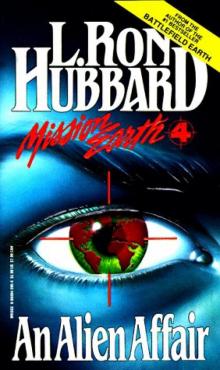 An Alien Affair
An Alien Affair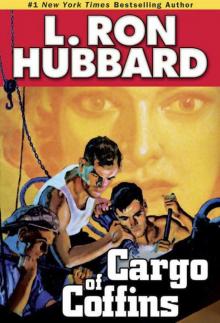 Cargo of Coffins
Cargo of Coffins Mission Earth Volume 5: Fortune of Fear
Mission Earth Volume 5: Fortune of Fear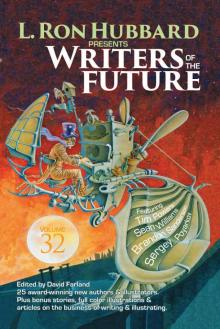 Writers of the Future 32 Science Fiction & Fantasy Anthology
Writers of the Future 32 Science Fiction & Fantasy Anthology The Baron of Coyote River
The Baron of Coyote River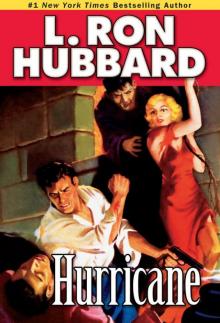 Hurricane (Stories From the Golden Age)
Hurricane (Stories From the Golden Age)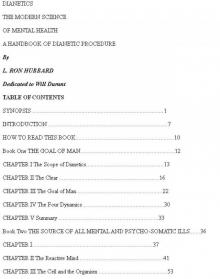 Dianetics: The Modern Science of Mental Health
Dianetics: The Modern Science of Mental Health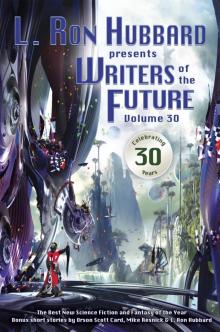 Writers of the Future, Volume 30
Writers of the Future, Volume 30 Battlefield Earth: A Saga of the Year 3000
Battlefield Earth: A Saga of the Year 3000 Fear
Fear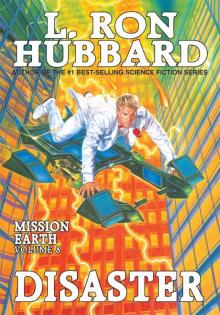 Disaster
Disaster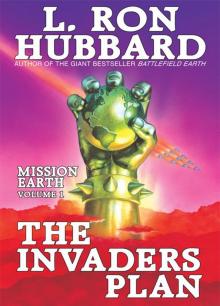 Invaders Plan, The: Mission Earth Volume 1
Invaders Plan, The: Mission Earth Volume 1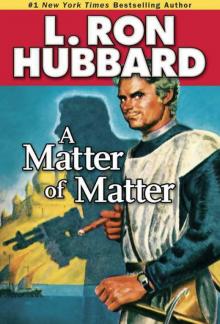 A Matter of Matter (Stories from the Golden Age)
A Matter of Matter (Stories from the Golden Age)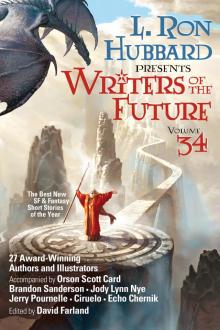 Writers of the Future Volume 34
Writers of the Future Volume 34 Death Waits at Sundown
Death Waits at Sundown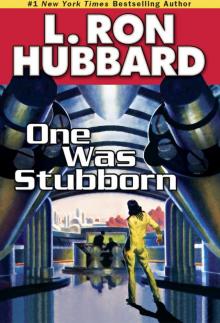 One Was Stubbron
One Was Stubbron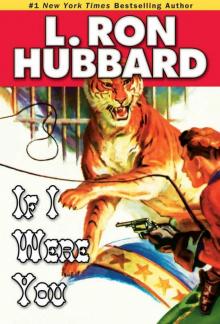 If I Were You (Stories from the Golden Age)
If I Were You (Stories from the Golden Age) Writers of the Future 32 Science Fiction & Fantasy Anthology (L. Ron Hubbard Presents Writers of the Future)
Writers of the Future 32 Science Fiction & Fantasy Anthology (L. Ron Hubbard Presents Writers of the Future) Writers of the Future, Volume 29
Writers of the Future, Volume 29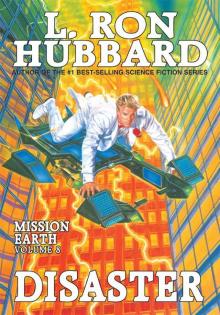 Mission Earth Volume 8: Disaster
Mission Earth Volume 8: Disaster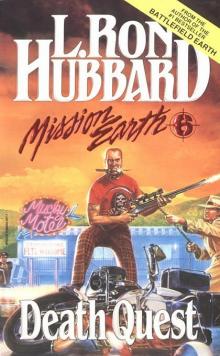 Mission Earth 6: Death Quest
Mission Earth 6: Death Quest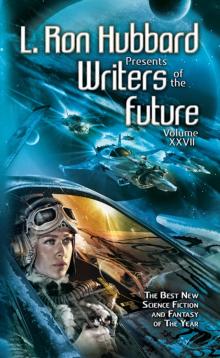 Writers of the Future, Volume 27
Writers of the Future, Volume 27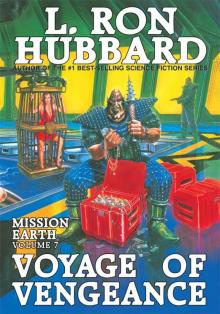 Mission Earth Volume 7: Voyage of Vengeance
Mission Earth Volume 7: Voyage of Vengeance Ole Doc Methuselah
Ole Doc Methuselah Mission Earth 07: Voyage of Vengeance
Mission Earth 07: Voyage of Vengeance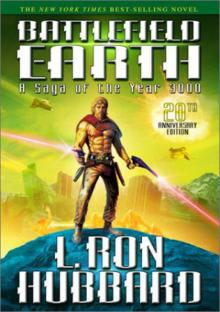 Battlefield Earth
Battlefield Earth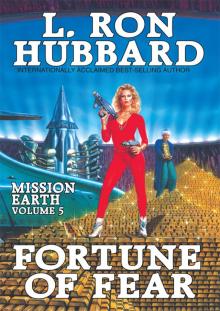 Fortune of Fear
Fortune of Fear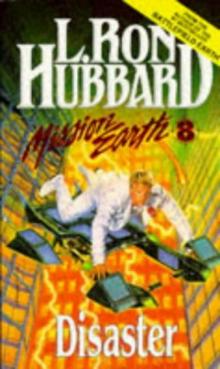 Mission Earth 8: Disaster
Mission Earth 8: Disaster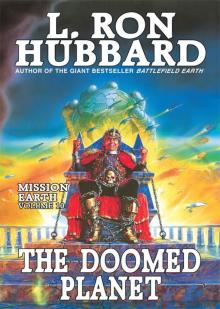 Mission Earth Volume 10: The Doomed Planet
Mission Earth Volume 10: The Doomed Planet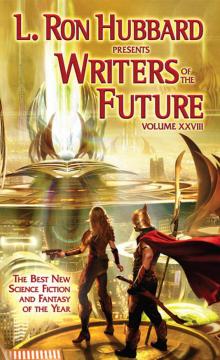 Writers of the Future, Volume 28
Writers of the Future, Volume 28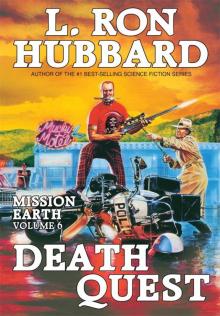 Mission Earth Volume 6: Death Quest
Mission Earth Volume 6: Death Quest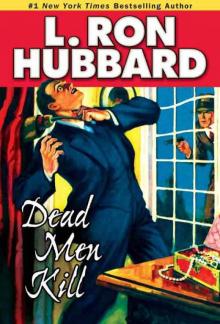 Dead Men Kill (Stories from the Golden Age)
Dead Men Kill (Stories from the Golden Age)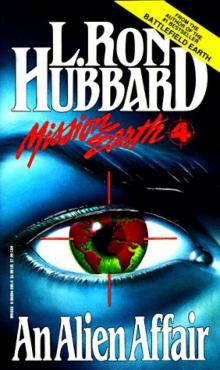 Mission Earth 4: An Alien Affair
Mission Earth 4: An Alien Affair Spy Killer (Stories from the Golden Age)
Spy Killer (Stories from the Golden Age) Mission Earth Volume 9: Villainy Victorious
Mission Earth Volume 9: Villainy Victorious L. Ron Hubbard Presents Writers of the Future, Volume 33
L. Ron Hubbard Presents Writers of the Future, Volume 33